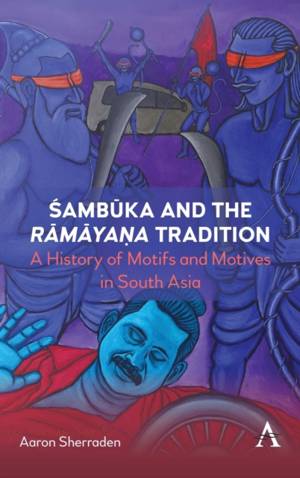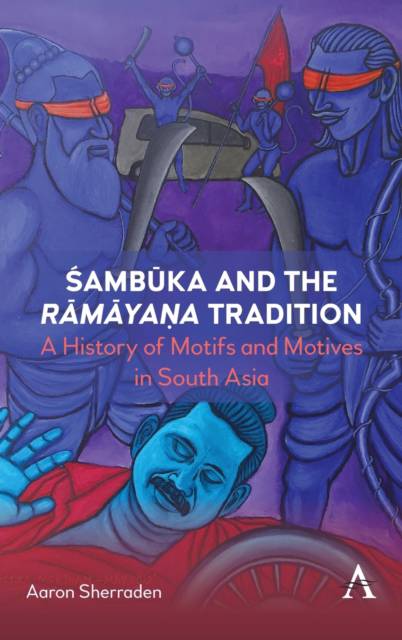
- Afhalen na 1 uur in een winkel met voorraad
- Gratis thuislevering in België vanaf € 30
- Ruim aanbod met 7 miljoen producten
- Afhalen na 1 uur in een winkel met voorraad
- Gratis thuislevering in België vanaf € 30
- Ruim aanbod met 7 miljoen producten
Omschrijving
According to Vālmīki's Sanskrit Rāmāyaṇa, Śambūka was practicing severe acts of austerity to enter heaven. In engaging in these acts as a Śūdra, Śambūka was in violation of class- and caste-based societal norms prescribed exclusively by the ruling and religious elite. Rāma, the hero of the Rāmāyaṇa epic, is dispatched to kill Śambūka, whose transgression is said to be the cause of a young Brahmin's death. The gods rejoice upon the Śūdra's execution and they restore the life of the Brahmin. The developmental history of the Śambūka narrative begins with the appearance of this story as a late addition to the core of Vālmīki's Rāmāyaṇa in the first few centuries of the common era, a period of immense revision to and consolidation of an idealistic political Brahminism. The Śambūka story, with its hardline depiction of varṇa-dharma, fit quite well within this project of widely asserting Brahmanical dominance. Subsequent Rāmāyaṇa poets almost instantly recognized the incident of Śambūka's execution as a blemish on Rāma's character and they began problematizing this earliest version of the story by adjusting the story to suit the expectations of their audiences. Such adjustments included a more sympathetic view of Śambūka that exhibited a concern for his afterlife in the form of Rāma granting Śambūka salvation, albeit through their deadly contact. This particular narrative took hold especially in medieval India when Rāma became the object of fervent religious devotion. More pointed departures from Vālmīki's Śambūka narrative developed within Jain Rāma texts and involved a complete overhaul in its exposition whereby Śambūka's death occurs accidentally and at the hands of Rāma's brother, Lakṣmaṇa. As a figure who embodies Jain ideals, Rāma could not participate in any act of violence, so Jain poets removed him from any involvement in Śambūka's execution. In a display of intercommunal exchange, this motif of Śambūka's accidental death is also found in some Hindu Rāmāyaṇas of the medieval period.
In the modern era, author-activists find that the story of Śambūka as known in Vālmīki's Rāmāyaṇa leaves out some critical details--that Śambūka was a revolutionary leader who peacefully advocated for equal access to education for India's oppressed populations and the abolishment of the caste system. Creators of new works on Śambūka seek to enter these details into the record of the Rāmāyaṇa tradition, thus correcting what they see as centuries of misrepresentation.
Specificaties
Betrokkenen
- Auteur(s):
- Uitgeverij:
Inhoud
- Aantal bladzijden:
- 274
- Taal:
- Engels
- Reeks:
- Reeksnummer:
- nr. 1
Eigenschappen
- Productcode (EAN):
- 9781839984693
- Verschijningsdatum:
- 1/08/2023
- Uitvoering:
- Hardcover
- Formaat:
- Genaaid
- Afmetingen:
- 155 mm x 231 mm
- Gewicht:
- 544 g

Alleen bij Standaard Boekhandel
Beoordelingen
We publiceren alleen reviews die voldoen aan de voorwaarden voor reviews. Bekijk onze voorwaarden voor reviews.









